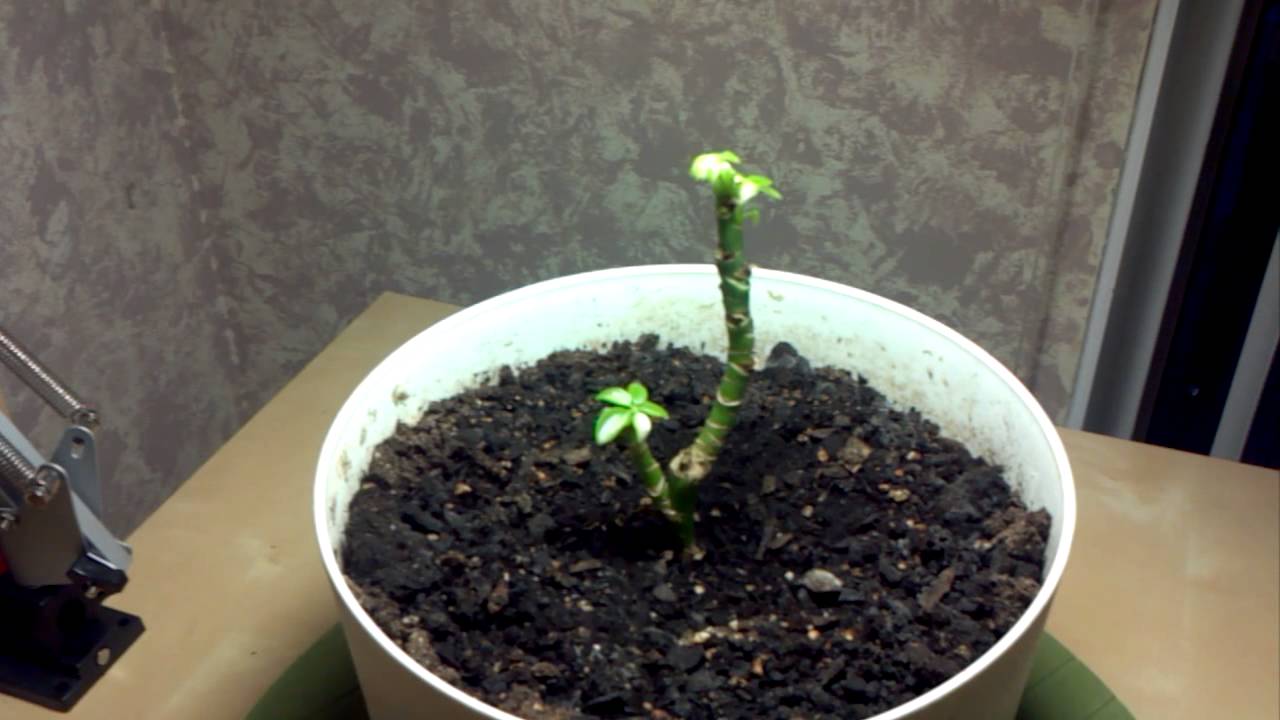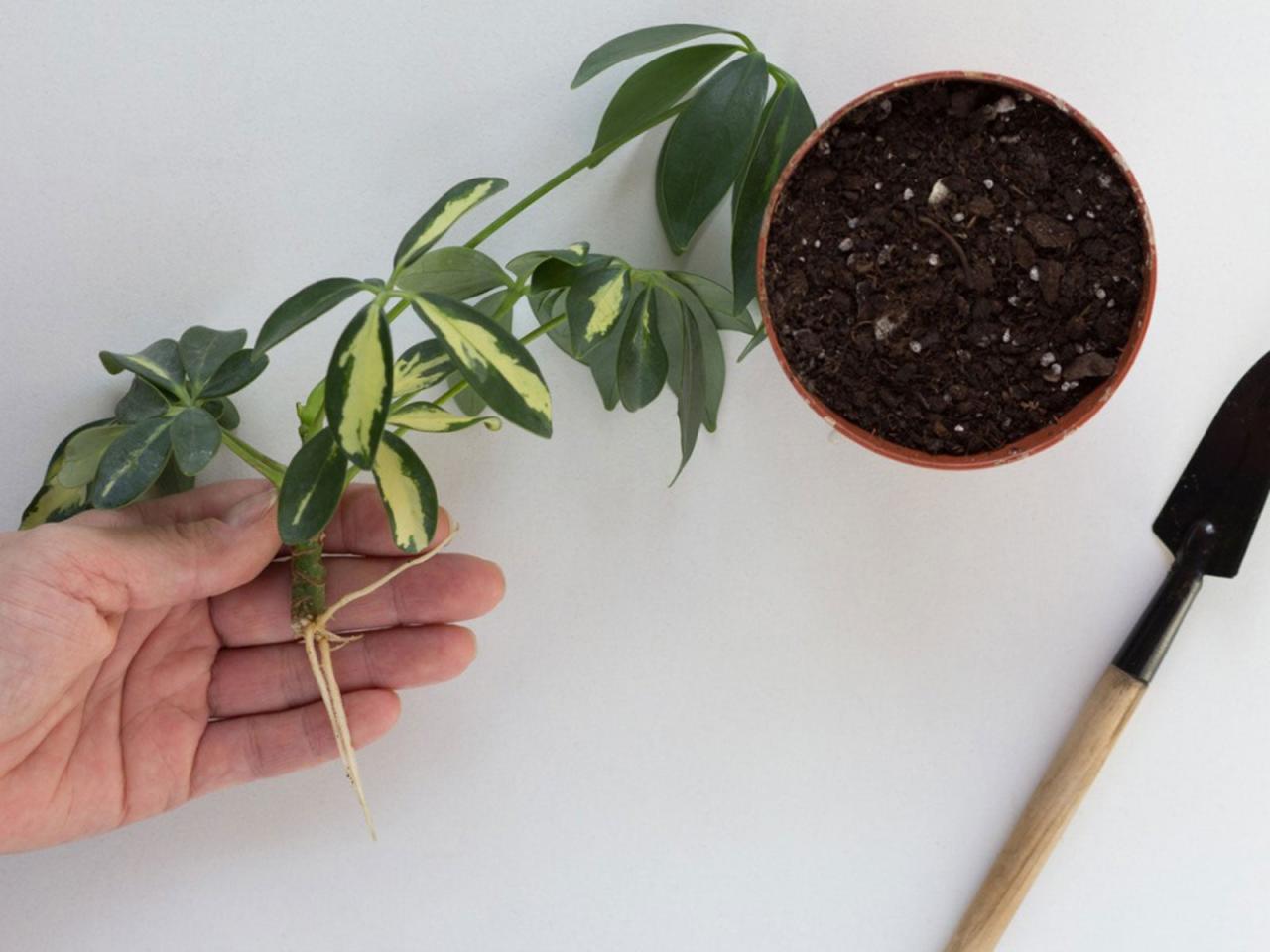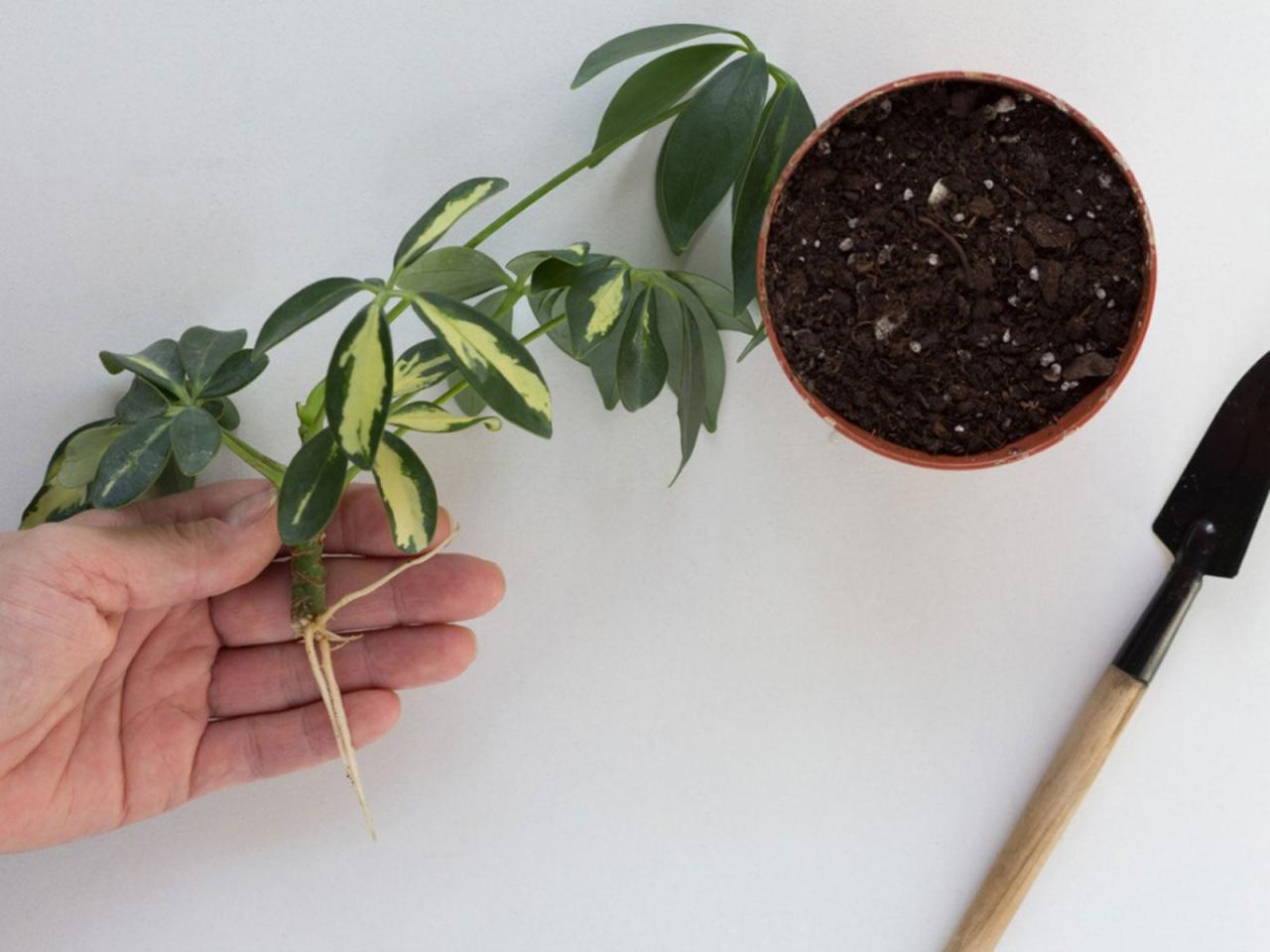How to Create a Lush Indoor Garden with Successful Schefflera Propagation is a comprehensive guide for plant enthusiasts looking to expand their indoor oasis with the elegance of Schefflera plants. Schefflera, with their vibrant foliage and air-purifying qualities, are a popular choice for adding a touch of nature indoors.
This guide will walk you through the process of propagating these beautiful plants, from selecting the right cuttings to providing the essential care for successful growth.
From the basics of choosing healthy Schefflera cuttings to mastering different propagation techniques like water propagation and soil propagation, this guide provides detailed instructions for every step. Discover the ideal conditions for Schefflera growth, including the importance of light, humidity, and temperature.
Learn how to identify signs of successful propagation and troubleshoot common problems that may arise. With this step-by-step guide, you’ll be well-equipped to propagate your own Schefflera plants and enjoy the beauty of a lush indoor garden.
The Allure of Indoor Gardens
Transforming your living space into a verdant oasis is a rewarding endeavor, offering numerous benefits beyond aesthetic appeal. Indoor gardening not only beautifies your home but also contributes to a healthier and more fulfilling environment.The presence of plants in indoor spaces has been scientifically proven to enhance air quality, reduce stress levels, and improve mood.
Plants naturally purify the air by absorbing harmful toxins and releasing oxygen, creating a cleaner and more refreshing atmosphere. Moreover, the calming effect of greenery has been shown to reduce stress and anxiety, fostering a sense of tranquility and well-being.
The Appeal of Schefflera Plants
Among the many plant species suitable for indoor gardening, Schefflera plants, also known as Umbrella Trees, stand out for their striking appearance and resilience. These tropical plants boast lush, glossy foliage that adds a touch of elegance to any room.
Their adaptability to various indoor conditions, including low light and infrequent watering, makes them a popular choice for busy homeowners.Schefflera plants are known for their air-purifying properties, effectively removing harmful pollutants from the air. Their vibrant foliage and attractive growth habit make them a visually appealing addition to any interior design scheme.
Schefflera Propagation: Expanding Your Indoor Oasis
Propagating Schefflera plants allows you to easily expand your indoor garden and share the beauty of these captivating plants with others. Propagation is the process of creating new plants from existing ones, and Schefflera plants are relatively easy to propagate through stem cuttings.
Selecting the Right Schefflera for Propagation: How To Create A Lush Indoor Garden With Successful Schefflera Propagation
Choosing the right Schefflera cutting is crucial for successful propagation. A healthy cutting will have a higher chance of rooting and developing into a thriving new plant.
Identifying Mature Stems
Mature Schefflera stems are the best choice for propagation. These stems are strong, woody, and have a good balance of nutrients and energy reserves. They are typically found on older, established plants.
Creating a lush indoor garden starts with understanding propagation techniques. Schefflera, with its vibrant foliage, can be easily propagated through cuttings. For another plant with effortless propagation, explore the secrets of propagating Mother of Thousands, a plant known for its prolific plantlets, Unlock the Secrets to Propagating Mother of Thousands at Home.
Once you’ve mastered these techniques, you’ll be well on your way to a thriving indoor garden filled with lush greenery.
- Mature stems are usually thicker and have a darker green color compared to younger stems.
- They often have nodes, which are small bumps where leaves and branches grow. These nodes are important for root development.
- Avoid using stems that are soft, thin, or have signs of disease or damage.
Ideal Cutting Size and Characteristics
The ideal Schefflera cutting for propagation should be about 4-6 inches long and have at least two nodes.
- Make a clean cut just below a node, using sharp pruning shears or a knife.
- Remove any leaves below the lowest node to prevent rotting.
- The cutting should be firm and healthy, with no signs of wilting or discoloration.
Preparing the Cutting for Propagation
The success of Schefflera propagation hinges on the proper preparation of the cutting. Selecting a healthy stem with vigorous growth is the first step. Once you’ve identified the ideal stem, it’s time to make a clean cut.
Creating a lush indoor garden with Schefflera propagation can be a rewarding experience, but it can also be a little tricky. You’ll need to learn the best techniques for rooting these cuttings, and you’ll want to be patient as they develop.
The process can be a little easier if you’re familiar with the basics of plant propagation, and if you’re interested in exploring other plants, you can find out more about propagating the Mother of Thousands here. Once you’ve mastered the art of propagating both Schefflera and Mother of Thousands, you’ll be well on your way to creating a beautiful and thriving indoor garden.
Making Clean Cuts
Clean cuts are crucial to prevent disease and promote root growth. This involves using sharp, sterile tools.
- Sharp Pruning Shears or Knife:These tools make clean, precise cuts that minimize damage to the stem.
- Sterilization:Sterilize your tools before each use to prevent the introduction of bacteria or fungi. You can achieve this by wiping them down with rubbing alcohol or by briefly dipping them in a bleach solution.
Removing Lower Leaves
After making the cut, remove the leaves from the lower portion of the cutting. This prevents rotting and encourages the development of roots.
- Leave a Few Leaves at the Top:Leave a few leaves at the top of the cutting to allow for photosynthesis and energy production.
- Use a Sharp Knife or Pruning Shears:Make clean cuts just below the leaf nodes, where roots will emerge.
Propagation Methods

Schefflera propagation offers a rewarding experience, allowing you to expand your indoor garden with new plants. Two primary methods, water propagation and soil propagation, provide distinct pathways to cultivate new Schefflera plants. Each method possesses its own set of advantages and disadvantages, making it crucial to understand their nuances before embarking on your propagation journey.
Comparing Propagation Methods
The choice between water and soil propagation ultimately depends on your preferences and resources. Understanding the pros and cons of each method can guide your decision.
Method |
Advantages |
Disadvantages |
|---|---|---|
Water Propagation |
|
|
Soil Propagation |
|
|
Water Propagation
Water propagation is a popular method for Schefflera propagation due to its simplicity and accessibility. This method involves placing cuttings in a container filled with water, allowing roots to develop over time.
Step-by-Step Guide
- Prepare the cutting:Select a healthy Schefflera stem with several nodes (the points where leaves grow). Make a clean cut just below a node, using sharp pruning shears. Remove any leaves that will be submerged in water.
- Prepare the container:Fill a clean glass jar or vase with fresh water. Ensure the water level is sufficient to cover the base of the cutting but not the leaves.
- Place the cutting:Insert the prepared cutting into the water, ensuring the cut end is fully submerged.
- Provide indirect light:Position the container in a location with bright, indirect light. Avoid direct sunlight, which can overheat the water and damage the cutting.
- Change the water:Change the water every 2-3 days to prevent bacterial growth and ensure fresh oxygen for root development.
- Monitor for root development:Observe the cutting regularly for signs of root growth, which typically appear within 4-6 weeks.
- Transplant to soil:Once roots are approximately 2 inches long, gently transfer the cutting to a pot filled with well-draining potting mix.
Soil Propagation
Soil propagation involves planting cuttings directly into a suitable potting mix, allowing roots to develop within the soil environment. This method offers a faster root development rate compared to water propagation.
Step-by-Step Guide
- Prepare the cutting:Select a healthy Schefflera stem with several nodes. Make a clean cut just below a node, using sharp pruning shears. Remove any leaves that will be buried in the soil.
- Prepare the potting mix:Use a well-draining potting mix specifically designed for indoor plants. Ensure the soil is moist but not soggy.
- Prepare the pot:Choose a pot with drainage holes and fill it with the prepared potting mix.
- Plant the cutting:Make a small hole in the soil and insert the prepared cutting. Ensure the cut end is fully buried and the nodes are above the soil line.
- Provide indirect light:Position the pot in a location with bright, indirect light. Avoid direct sunlight, which can dry out the soil and stress the cutting.
- Water regularly:Keep the soil consistently moist but not waterlogged. Allow the top inch of soil to dry out between waterings.
- Monitor for growth:Observe the cutting for signs of new growth, indicating successful rooting.
Essential Care for Schefflera Propagation
Providing the right care is crucial for successful Schefflera propagation. Just like any plant, Schefflera cuttings need the right conditions to thrive and develop roots. This section will explore the essential care requirements, including light, humidity, temperature, and watering, to ensure your Schefflera cuttings flourish.
Light Requirements
Adequate light is essential for healthy root development in Schefflera cuttings. While they can tolerate low light conditions, they thrive in bright, indirect light. Direct sunlight can scorch the leaves, so it’s best to place them in a location that receives filtered sunlight or bright, indirect light.
Humidity
Schefflera cuttings prefer a humid environment. To maintain optimal humidity, you can use a few techniques:
- Misting:Regularly mist the cuttings with water, especially during dry periods. This helps maintain moisture around the leaves and promotes healthy growth.
- Humidity Tray:Place the cuttings on a tray filled with pebbles and water. The water will evaporate, creating a humid microclimate around the cuttings.
- Grouping:Group the cuttings together. This creates a more humid environment around them.
Temperature Control
Schefflera cuttings thrive in warm temperatures. The ideal temperature range for root development is between 70-80°F (21-27°C). Avoid placing them in areas with drafts or extreme temperature fluctuations.
Watering and Drainage
Proper watering is vital for Schefflera cuttings. They prefer moist soil but should not be waterlogged. Water thoroughly when the top inch of soil feels dry.
- Drainage:Ensure the container has adequate drainage holes to prevent waterlogging. Excess water can lead to root rot and hinder the development of new roots.
- Watering Frequency:The frequency of watering depends on factors such as the size of the container, the type of potting mix, and the ambient temperature. It’s best to check the soil moisture before watering.
Signs of Success and Troubleshooting

Successfully propagating Schefflera requires patience and observation. The signs of success are evident in the growth of new roots and leaves, indicating that the cutting has successfully established itself. However, certain issues can arise during propagation, and understanding these problems and their solutions is crucial for successful propagation.
Signs of Successful Propagation
Signs of successful Schefflera propagation include:
- New Root Growth:The most definitive sign of successful propagation is the emergence of new roots from the cutting. This can be observed by gently tugging on the cutting; if resistance is felt, roots are likely present.
- New Leaf Growth:The appearance of new leaves on the cutting indicates that the plant is photosynthesizing and actively growing. New leaves will typically be smaller than mature leaves, but they should be healthy and vibrant in color.
- Healthy Leaf Color:The leaves of a successfully propagated Schefflera should maintain their characteristic deep green color. Yellowing or browning of leaves can indicate problems with watering, lighting, or nutrient deficiencies.
- Strong Stem:The stem of a successfully propagated Schefflera should be firm and upright. A weak or wilting stem could indicate insufficient root development or improper care.
Common Problems During Propagation
Several issues can arise during Schefflera propagation, including:
- Root Rot:Root rot is a common problem that occurs when the cutting is kept in overly moist conditions. This can lead to the decay of the roots and eventually the death of the cutting.
- Leaf Drop:Leaf drop can be caused by various factors, including overwatering, underwatering, insufficient light, or temperature fluctuations.
- Pest Infestation:Schefflera cuttings can be susceptible to pests such as aphids, mealybugs, and spider mites.
- Disease:Fungal or bacterial diseases can affect Schefflera cuttings, leading to leaf spots, wilting, or stem rot.
Troubleshooting Propagation Issues, How to Create a Lush Indoor Garden with Successful Schefflera Propagation
Here are some solutions and preventative measures for common problems encountered during Schefflera propagation:
Root Rot
- Preventative Measures:
- Use a well-draining potting mix.
- Water only when the soil is dry to the touch.
- Avoid overwatering, as this can lead to root rot.
- Solutions:
- If root rot is suspected, remove the cutting from the soil and inspect the roots.
- Trim away any rotted or damaged roots using a sharp, sterilized knife.
- Repot the cutting in fresh, well-draining soil.
Leaf Drop
- Preventative Measures:
- Water consistently, allowing the soil to dry slightly between waterings.
- Provide bright, indirect light.
- Avoid drastic temperature fluctuations.
- Solutions:
- Adjust watering practices to ensure the soil is not too wet or too dry.
- Move the cutting to a location with brighter, indirect light.
- Maintain a consistent temperature, avoiding drafts or sudden changes in temperature.
Pest Infestation
- Preventative Measures:
- Inspect new cuttings for pests before introducing them to your collection.
- Maintain good hygiene practices, regularly cleaning and sanitizing tools and pots.
- Solutions:
- Isolate the infested cutting to prevent the spread of pests.
- Use insecticidal soap or neem oil to treat the infestation.
- For severe infestations, consider using a systemic insecticide.
Disease
- Preventative Measures:
- Use clean, sterilized tools and pots.
- Avoid overwatering and provide adequate ventilation.
- Solutions:
- Isolate the affected cutting to prevent the spread of disease.
- Remove any diseased leaves or stems.
- Treat the cutting with a fungicide or bactericide, depending on the type of disease.
Transplanting and Continued Care
Once your Schefflera cuttings have successfully rooted, they are ready to be transplanted into their permanent homes. This process ensures they have ample space to grow and thrive.
Transplanting Procedure
Transplanting involves moving the rooted cuttings from their propagation environment to a larger container with fresh soil. This step is crucial for the plant’s long-term health and growth.
- Choose the Right Pot:Select a pot that is slightly larger than the root ball of the Schefflera cutting. This allows for adequate space for root development. A pot with drainage holes is essential to prevent overwatering.
- Prepare the Soil:Use a well-draining potting mix specifically designed for indoor plants. This ensures proper aeration and moisture retention. A mix containing peat moss, perlite, and vermiculite is a good option.
- Gently Remove the Cutting:Carefully remove the cutting from its propagation container, ensuring minimal disturbance to the roots.
- Position in the New Pot:Place the cutting in the center of the new pot, ensuring the root ball is at the same level as the soil surface.
- Fill with Soil:Fill the pot with the prepared potting mix, gently pressing it around the root ball to secure the plant.
- Water Thoroughly:Water the newly transplanted Schefflera thoroughly to settle the soil and ensure adequate moisture.
Ideal Soil and Container Size
The ideal soil for a newly transplanted Schefflera is a well-draining mix that retains moisture but doesn’t become waterlogged. A combination of peat moss, perlite, and vermiculite provides the perfect balance. The container size should be slightly larger than the root ball to allow for growth.
As the plant matures, it may need to be repotted into a larger container every few years.
Ongoing Care
Once transplanted, Schefflera cuttings require regular care to thrive.
- Watering:Water the plant thoroughly when the top inch of soil feels dry. Avoid overwatering, which can lead to root rot.
- Sunlight:Provide bright, indirect light. Direct sunlight can scorch the leaves.
- Humidity:Schefflera plants prefer moderate to high humidity. Misting the leaves regularly or placing the pot on a humidity tray can help.
- Fertilization:Fertilize the plant every few weeks during the growing season (spring and summer) with a balanced liquid fertilizer diluted to half strength.
- Pruning:Pinch back the tips of stems to encourage bushier growth.
Closing Notes
By following these guidelines, you’ll be well on your way to cultivating a thriving indoor garden with your own propagated Schefflera plants. From selecting the perfect cuttings to nurturing their growth, each step contributes to the success of your indoor oasis.
Embrace the joy of propagation and witness the transformation of your cuttings into flourishing Schefflera plants, adding a touch of natural beauty and serenity to your home.
FAQ Insights
What is the best time of year to propagate Schefflera?
Spring and summer are the ideal times for Schefflera propagation, as the plant is actively growing during these seasons.
How long does it take for Schefflera cuttings to root?
It can take anywhere from 4 to 8 weeks for Schefflera cuttings to develop roots, depending on the propagation method and environmental conditions.
Can I propagate Schefflera from seed?
While possible, Schefflera propagation from seed is a less common method and can be more time-consuming than using cuttings.
